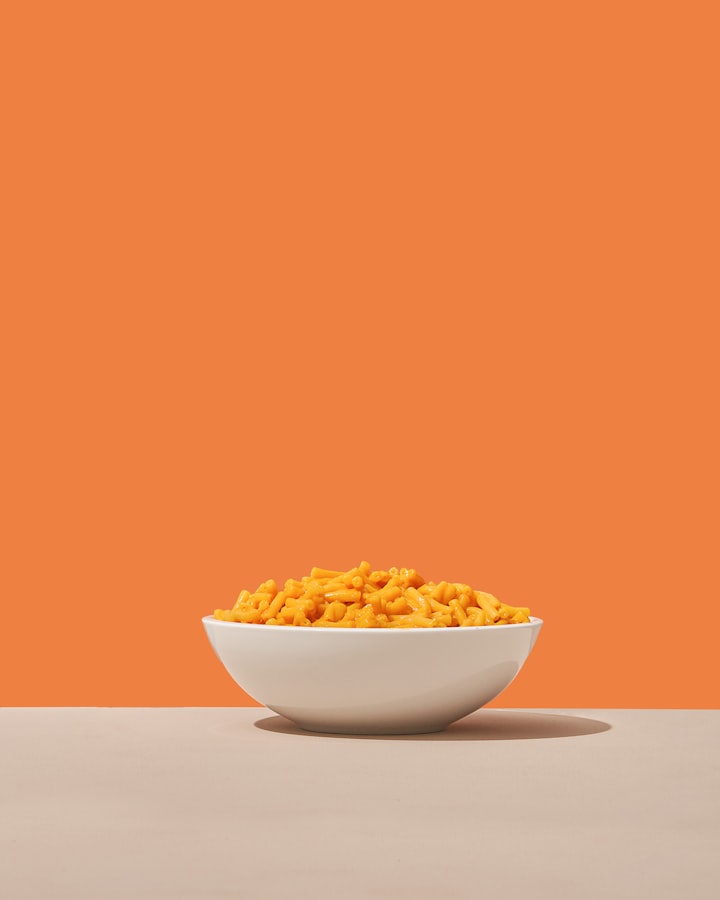Nostalgia in a Bowl
Dairy and carbs, can't get much better than this

There’s little else more iconically nostalgic than mac n’ cheese. From a box, from Grandma’s recipe, almost everyone has memories of pasta bathed in cheesy sauce, topped with pepper, hot sauce, or just as is. In a bowl or straight out of the pot, we just can’t seem to get enough of the orange goop.
Today, I’d like to explore the science of America’s favorite comfort food. What makes it so singularly appealing? The how behind the why, if you will. What is it about this simple combination of dairy and carbs that works so beautifully together? Let’s jump in.
Firstly, we need to understand what goes into the sauce. In a traditional, by-the-wisdom-of-the-grandmothers-who-came-before-us recipe, we start with a roux (or béchamel). The simple mixture of flour and butter is the foundation for creamy sauce, serving as the base and as a thickening agent. When it’s heated, you add milk. Slowly, dear reader, else you end up with a sad pan of hot milk with dejected glops of butter-flour. Patience really should be listed as an ingredient to making the sauce. Maybe that’s what our ancestors are trying to pass down to us: the lost art of patience.
Next, we need to add the cheese. Here’s where it gets fun. A mix of cheeses is generally accepted as far better than just one. A sharp cheddar with a smooth gruyere, or brie, mozzarella, and a dash of blue cheese for a decadent white sauce. The secret here is the different melting points and oil content that keep the sauce from getting too uniformly greasy. Again, patience is key, and the cheese needs to be added slowly to the roux, handful by handful.
After carefully and agonizingly adding the cheese and stirring it all into creamy bliss, it’s time to turn your attention to pasta. The thing is, you can’t just schlep your grand creation onto any old noodles, or you could if that floats your boat. But there’s a reason elbow macaroni has been the go to for years and years. It’s in the name, first of all; we call it mac ‘n cheese, not penne ‘n cheese. Elbow macaroni is objectively the perfect size and shape to support the sauce and makes the flavor shine. The starchy carbs adhere to the cream and oil, making it a gooey mess of deliciousness. At this point you may be saying to yourself, “That’s all well and good, but what kind of pasta? We’ve got the shape but there’s a thousand types out there.” You would be correct. Nowadays, we have whole wheat, gluten free, vegan, keto, veggie, frozen, dried, there’s practically a pasta for every person. In my limited experimenting, I’ve found classic and whole wheat are the way to go: the natural starch in the grain makes for great texture and bonds will with the cheese. Cook to your preferred softness, drain and prepare to mix.
After this labor of love, it’s finally time to bring your sauce and noodles together. Some mix it as is, some like to add herbs. Some serve it (or eat it) straight from the pot, some, like my grandmother, insist on topping it with bread crumbs and butter, then baking it into golden brown diabetes on a plate. Whatever your style, you can sit back and enjoy it. This summer as you’re making your mac ‘n cheese, whether it be mad science or a basic box version, think about the generation that came before, taking comfort in the same food that we hold so dear in past memories and present indulgence. Happy summer.
Sources:
https://modernistcuisine.com/mc/science-helps-craft-the-perfect-mac-and-cheese/
https://www.bostonglobe.com/lifestyle/food-dining/2016/01/25/better-macaroni-and-cheese-through-science/4ajKeGFOKChDzN1ZYXiWeK/story.html
About the Creator
M. A. Mehan
"It simply isn't an adventure worth telling if there aren't any dragons." ~ J. R. R. Tolkien
storyteller // vampire // drink goblin // desert rat






Comments
There are no comments for this story
Be the first to respond and start the conversation.